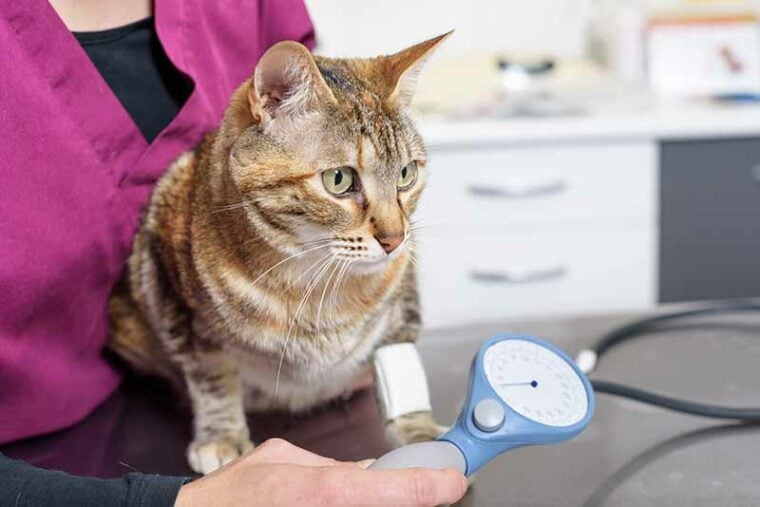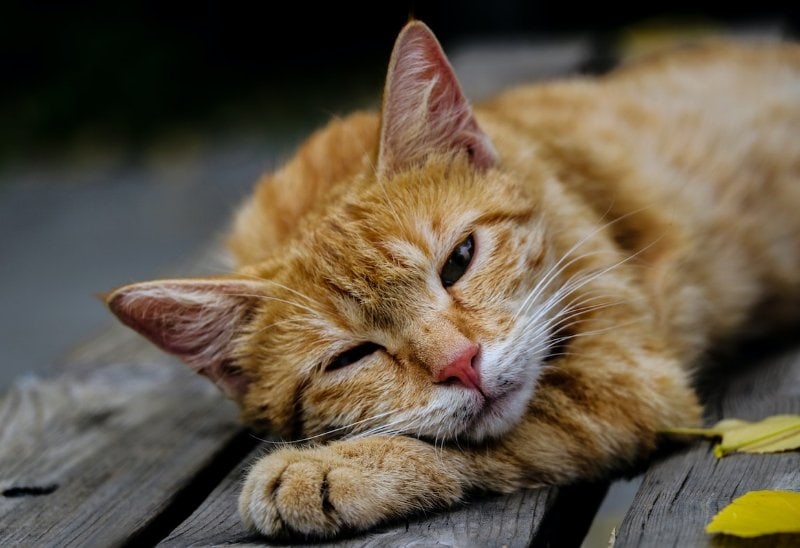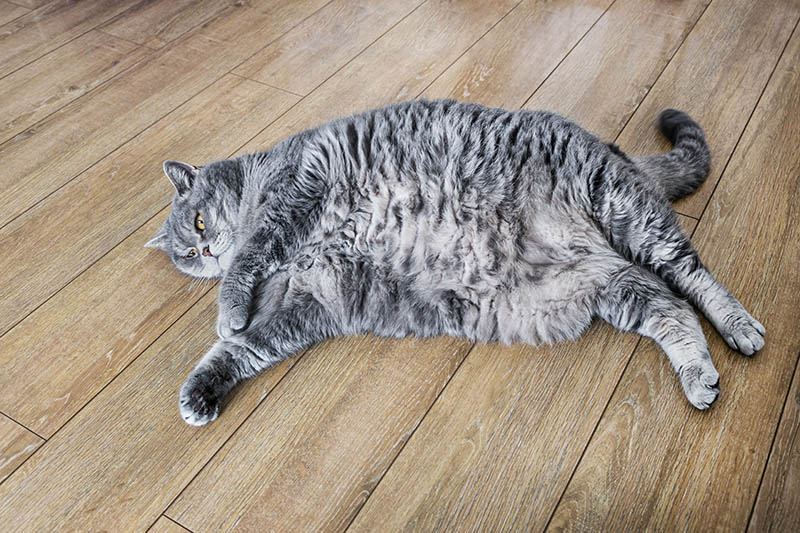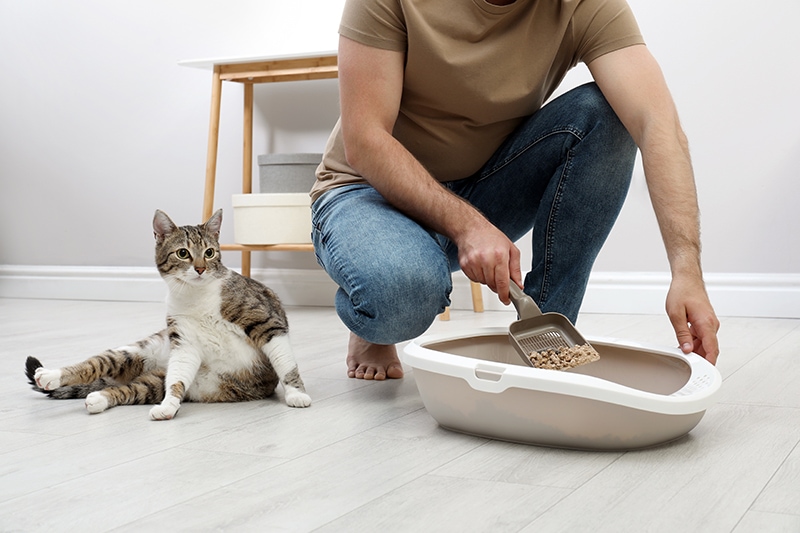
Hypertension is when a cat’s blood pressure is too high, which stresses internal organs and contributes to conditions that can ultimately result in blindness, kidney problems, and death. The blood pressure readings consist of two numbers.
The upper number, systolic blood pressure (SBP), represents the highest pressure exerted against your cat’s arteries when its heart contracts. The other number, diastolic blood pressure (DSP), shows the lowest pressure in your cat’s arteries when the heart relaxes. High blood pressure diagnoses are usually made based on SBP measurements.
What Is Hypertension in Cats?
Normal blood pressure for cats sits somewhere around 120 mmHg (SBP). Cats aren’t usually diagnosed with hypertension until their blood pressure reaches at least 160 mmHg.
However, cats with signs of organ involvement, such as blindness or high-blood pressure-related heart or kidney problems, are often considered hypertensive with blood pressures of 150mmHg or above. Cats with blood pressure readings between 150mmHg and 180mmHg are classified as mildly hypertensive and over 180mmHg as severely hypertensive. The risk of organ damage goes up as the SBP goes up.
What Are the Signs of Hypertension in Cats?
Feline hypertension can be difficult to diagnose in the early stages since no signs exist. It’s why many veterinarians recommend that cats over the age of 7 have their blood pressure measured once a year to catch hypertension before serious problems develop.
Signs usually only become evident once hypertension-related organ damage has already occurred. The brain, kidneys, heart, and eyes are the most commonly impacted organs. Blindness is, unfortunately, often the first sign of hypertension in many cats.
Cats having vision trouble often bump into things and sometimes have fixed, wide-open pupils. Vision problems often result from hypertension-related retinal detachment. Prompt treatment can sometimes minimize the chances of permanent vision loss.
Cats’ kidneys, hearts, and brains often become involved as the condition progresses. Signs that the condition has impacted a cat’s kidneys often include vomiting and appetite loss. Cats with brain involvement sometimes demonstrate behavioral changes and become disoriented. Hypertension can also impact the heart, often presenting as abnormal heart sounds, which are usually first discovered during veterinary checkups and exams.

What Are the Causes of Hypertension in Cats?
Hypertension in cats is often linked to underlying conditions such as chronic kidney disease (CKD) and hyperthyroidism. It’s called secondary hypertension if an underlying cause can be identified. About 60% of cats with high blood pressure also have CKD, and around 20% have hyperthyroidism.1
No Underlying Cause
But some cats (around 20%) without other medical issues also develop the condition as well. Primary hypertension is diagnosed in cats when there’s no underlying disease causing the condition. Both types of hypertension are relatively common in older cats.
Primary hypertension can often be addressed with a combination of medication and lifestyle adjustments. Treating secondary hypertension is a bit more complicated, as it requires the identification of the underlying case to be effective.
Obesity
Overweight cats are often at increased risk for developing conditions such as hypertension. Good weight management can play an important role in reducing your cat’s risk of developing high blood pressure and other quality-of-life-altering conditions such as osteoarthritis.
Kidney Disease & Hyperthyroidism
CKD is often diagnosed with blood tests, urinalysis, and imaging studies. While the condition isn’t curable, it’s often manageable with dietary changes, medication, and increased hydration. Hyperthyroidism can usually be identified with blood tests. Treatment normally involves medication, surgery, or radioactive iodine treatment, depending on the cause of the excess hormone production.
Some cats require medication to control their hypertension even after the underlying condition has been identified and properly managed.

How Do I Care for A Cat With Hypertension?
Your veterinarian should be the first person to answer these questions for you. There are in general several ways you can keep your cat happy and healthy at home, such as feeding them an appropriate amount of high-quality cat food, ensuring they maintain a healthy weight, providing them with enough mental stimulation, and taking care of their environmental needs, all of which are also beneficial for pets with high blood pressure.
Feeding a Balanced Diet
Hypertension is often linked to obesity in cats, so ensuring your buddy maintains a healthy weight can go a long way toward keeping them healthy and managing their high blood pressure. Feeding the right portions of high-quality cat food ensures cats obtain the right nutrients in the most effective way, right from their food. Cats with CKD often benefit from eating formulations designed to support kidney health.
Keeping the Litter Box Pristine
Consider giving your cat’s litter box extra attention if they’re suffering from CKD, as the condition often causes increased urination, which can lead to an unpleasant environment if it’s not cleaned frequently.
Exercising
Ensuring cats get enough play time can help manage feline hypertension by helping with weight management. And playtime is also a great feline-human bonding activity that can provide cats with some all-important fun and mental stimulation. A few short daily sessions are generally all most cats need to stay on an even keel. Cats generally lose interest after 10 or 15 minutes of chasing toys. Exercise may need to be modified in cats with heart disease.
Providing Adequate Hydration
Convincing your pet to drink enough water is essential since good hydration is key to feline kidney and urinary tract health. Cats often prefer running water, and fountains encourage some pets to drink more by tapping into natural feline preferences. Increasing the amount of wet food in your pet’s diet is another tasty way to boost your buddy’s water consumption.

FAQ
Does Stress Cause Feline Hypertension?
Most cases are linked to CKD and hyperthyroidism. However, stressful environments can temporarily increase your cat’s blood pressure, so veterinarians usually rely on multiple measurements when diagnosing hypertension. There can be a significant “white coat effect” of visiting a veterinary clinic.
Why Is Hypertension More Common in Older Cats?
Older cats are more inclined to develop diseases such as CKD and hyperthyroidism, which are the two most common causes of high blood pressure.
Final Thoughts
Healthy adult cats usually have blood pressure measurements below 150mmHg (SBP). Readings above 160mmHg generally mean that a cat has high blood pressure, but 150mmHg to 180mmHg is sometimes considered mild hypertension. Hypertension is often caused by underlying conditions such as CKD, hyperthyroidism, and some rare adrenal diseases. Addressing hypertension usually requires diagnosing and treating underlying conditions, medication, and sometimes dietary changes.
Featured Image Credit: David Herraez Calzada, Shutterstock







